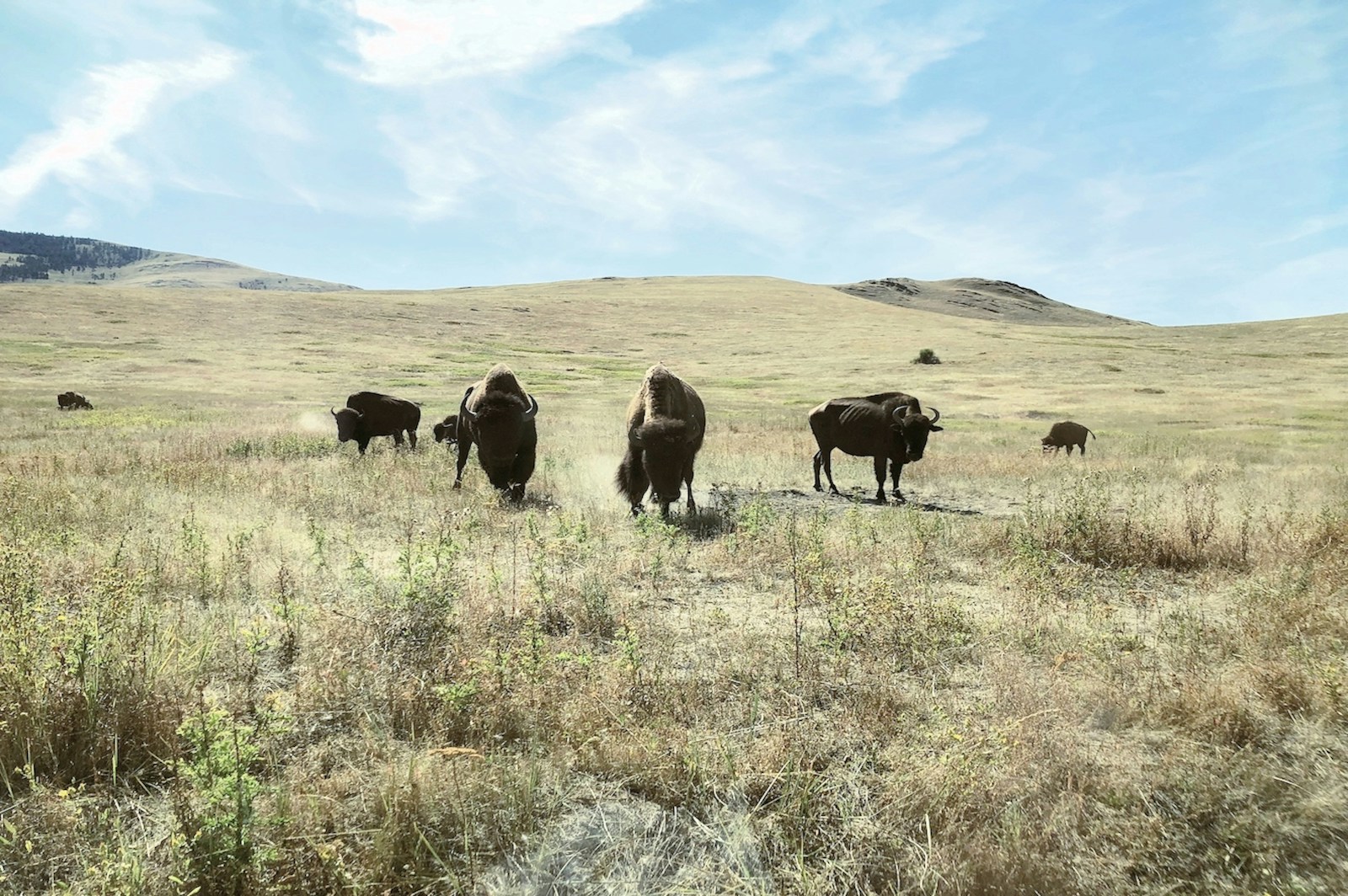North America’s largest land mammals, bison, are awe-inspiring creatures that can provide unforgettable wildlife viewing experiences. However, these massive animals deserve our respect and caution. While appearing docile, bison can be unpredictable and dangerous when threatened or startled. Each year, numerous visitors to national parks and wildlife refuges are injured because they underestimate the speed, power, and territorial nature of bison.
This guide will help you enjoy these magnificent animals safely while preserving their natural behaviors and ensuring your wellbeing.
Understanding Bison Behavior
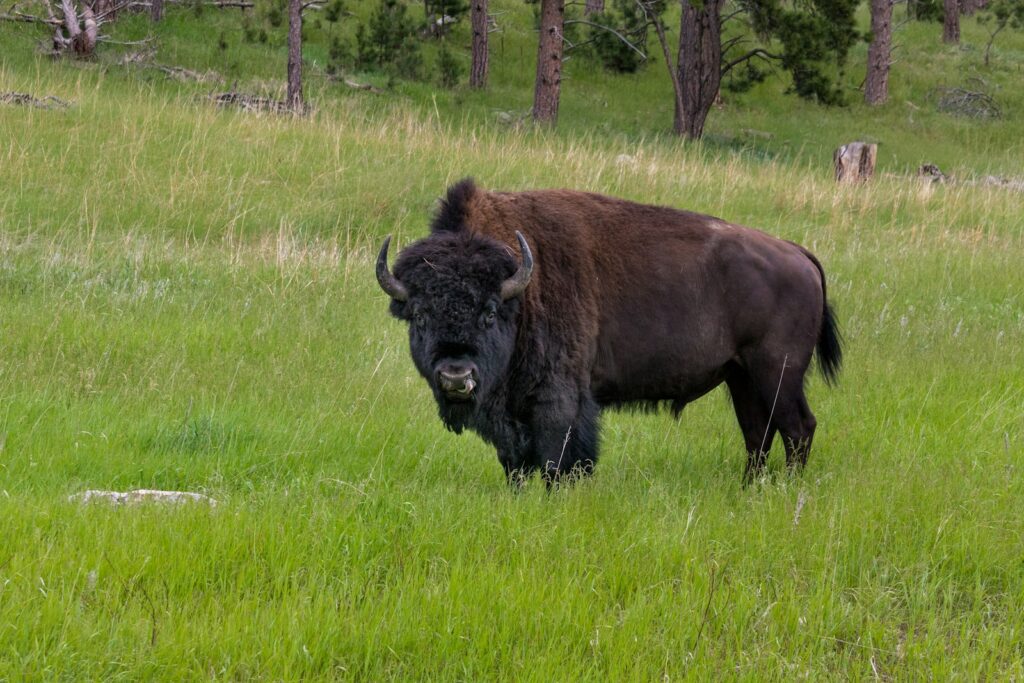
Bison are remarkably complex animals with distinct behavioral patterns that visitors should understand before approaching a herd. These massive ungulates can weigh up to 2,000 pounds and run at speeds of 35 miles per hour, making them both powerful and surprisingly agile. Bison communicate through body language—raised tails, pawing the ground, snorting, or head-shaking often indicate agitation or potential aggression.
Though they might appear calm and unbothered, bison can switch from peaceful grazing to charging in seconds if they perceive a threat to themselves or their calves. Recognizing these behavioral cues is essential for maintaining a safe distance and avoiding potentially dangerous encounters.
The Importance of Distance
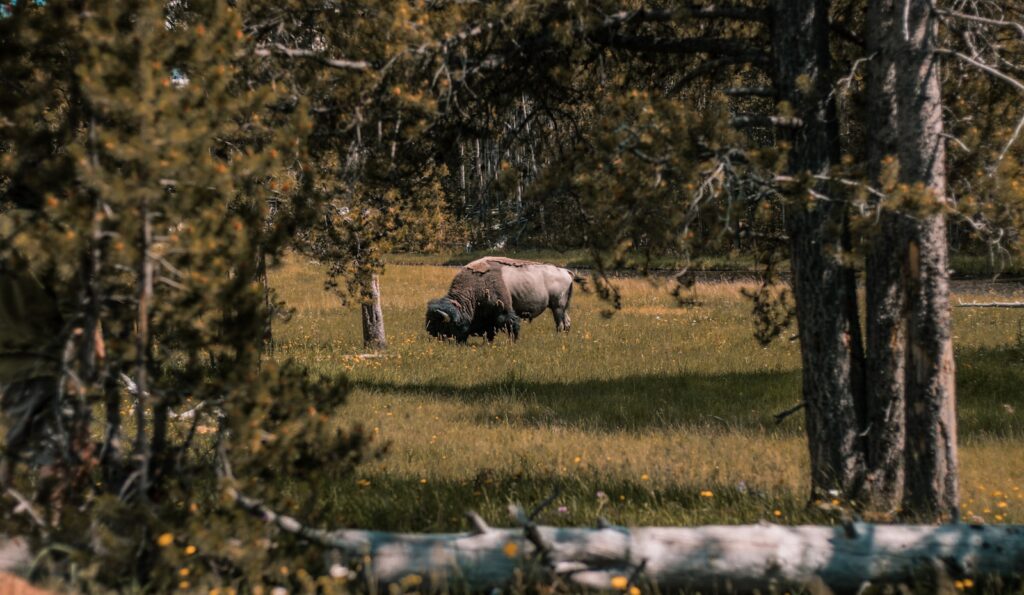
The single most important rule when observing bison is maintaining proper distance—park regulations typically require staying at least 25 yards (75 feet) away from bison at all times. This distance isn’t arbitrary but based on the animal’s comfort zone and reaction times. Even at this distance, you should be prepared to move further away if bison show any signs of distress or begin moving toward you.
Remember that this minimum distance should increase when observing mothers with calves, during rutting season (July-August), or in confined spaces where bison have limited escape routes. Using binoculars or telephoto lenses allows for intimate observation without violating this critical safety buffer.
Best Times for Bison Viewing
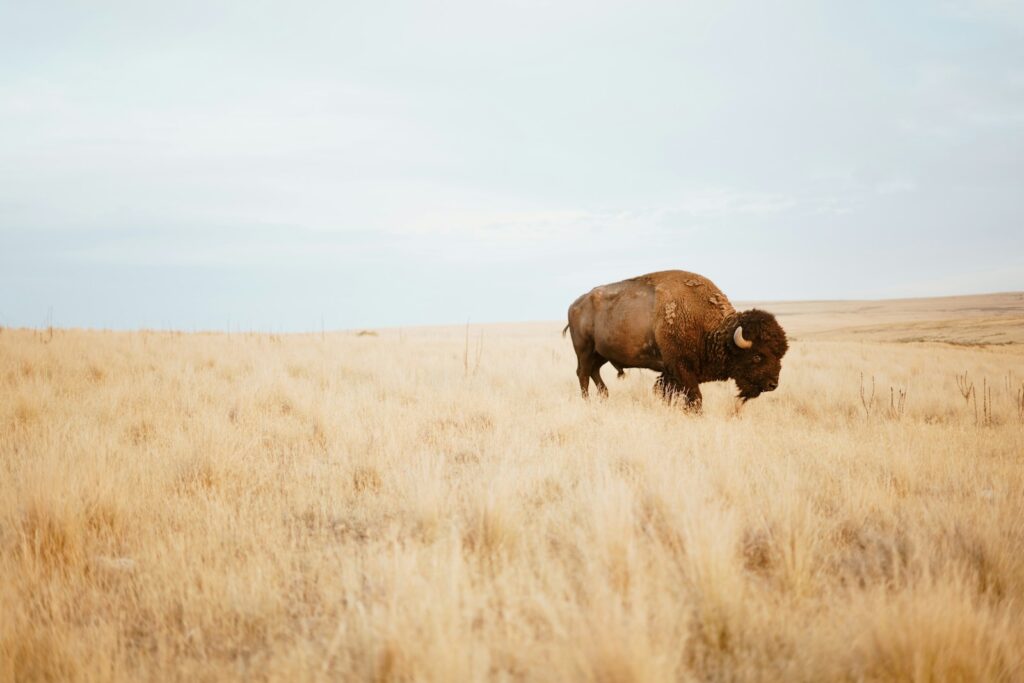
Timing your bison-watching excursion strategically can significantly enhance both safety and viewing quality. Early mornings and evenings typically offer the best opportunities as bison are more active during these cooler hours, often grazing or moving between locations. During midday heat, bison tend to be less active and may be resting, which provides fewer interesting behaviors to observe.
Seasonal considerations also matter—spring brings newborn calves (requiring extra caution), while late summer brings the dramatic rut with bulls displaying impressive dominance behaviors. Weekdays generally bring fewer human visitors to parks and preserves, resulting in less-stressed bison and more natural behaviors to witness.
Choosing the Right Viewing Location
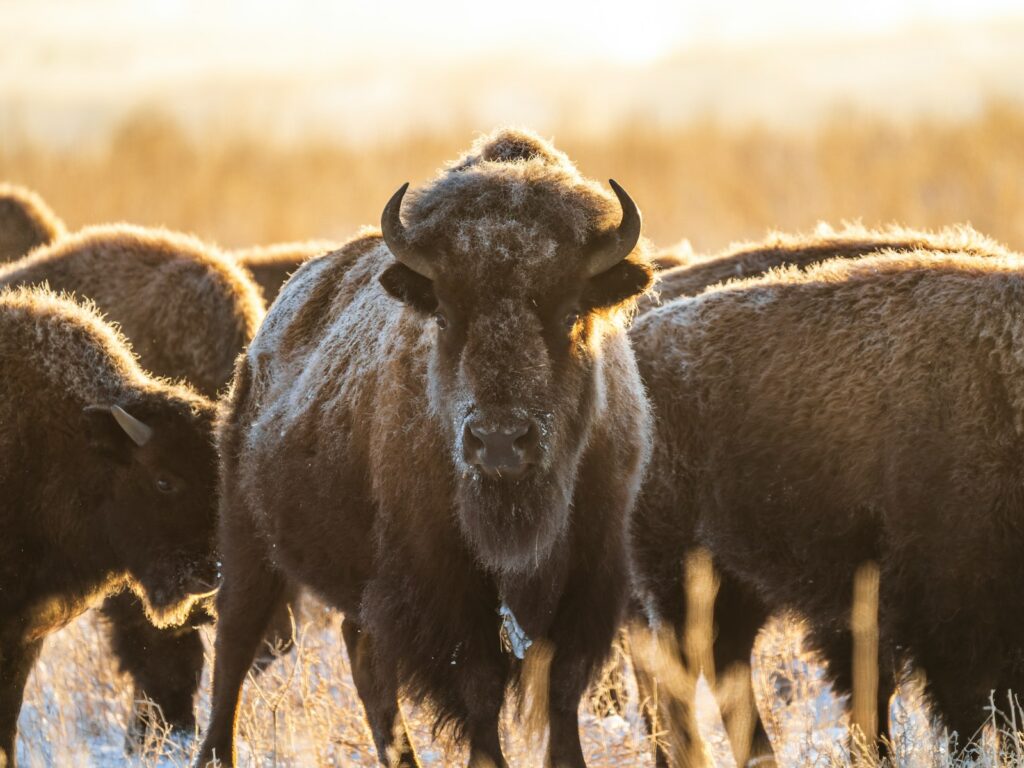
Selecting an appropriate viewing location substantially impacts both safety and observation quality when watching bison. Elevated positions like designated overlooks, hills, or roadside pullouts provide excellent vantage points while maintaining safe separation from the herd. Vehicle-based viewing is often recommended, as your car serves as both viewing blind and safety barrier—just ensure you’re fully pulled off the road and not blocking traffic.
Avoid positioning yourself between herd members or between bison and their perceived safety zones like forests or water sources. Always identify potential escape routes for yourself before settling in to watch, ensuring you have clear paths away from the bison should they begin moving in your direction.
Essential Equipment for Safe Bison Watching
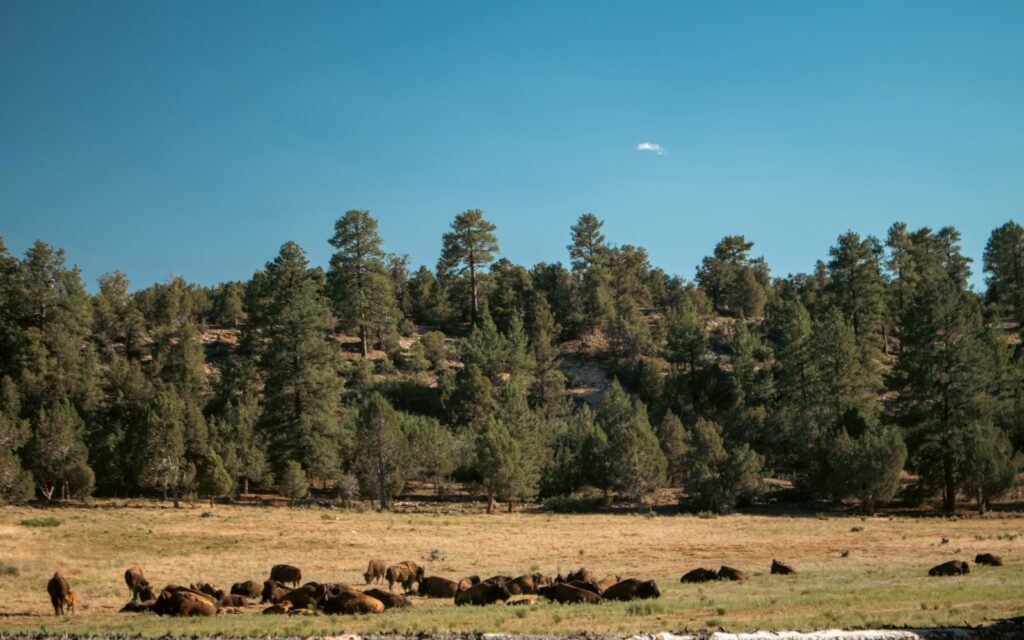
Proper equipment enhances both safety and enjoyment when observing bison in their natural habitat. Quality binoculars (8×42 or 10×42 magnification) are perhaps the most essential tool, allowing detailed observation from safe distances. A spotting scope on a stable tripod provides even greater magnification for serious wildlife watchers interested in behavior details. Cameras with telephoto lenses (at least 200mm, preferably 300mm or longer) enable photography without approaching too closely.
Beyond optical equipment, always carry bear spray when in bison country as a last-resort deterrent, though avoiding confrontation entirely remains the primary goal. Weather-appropriate clothing, including sturdy footwear, sun protection, and layers for temperature changes, ensures you can remain comfortable during extended observation periods.
Signs of Stressed or Agitated Bison
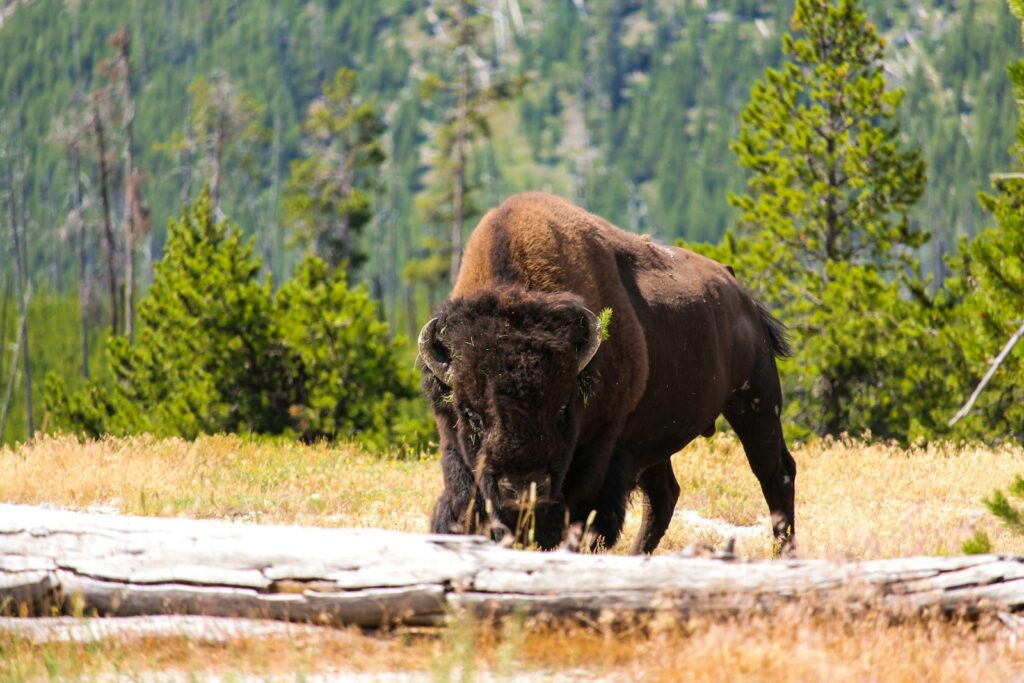
Recognizing stress signals in bison is crucial for preventing dangerous encounters during wildlife viewing. Tail elevation is perhaps the most obvious warning sign—when a bison raises its tail, it’s displaying agitation and may charge with little additional warning. Other clear indicators include pawing the ground with front hooves, short charges followed by stops (bluff charges), head tossing, or snorting. Bison may also display broadside posturing, turning their massive bodies perpendicular to perceived threats to appear larger.
When multiple animals in a herd stop feeding simultaneously and focus their attention in one direction, they’re likely responding to a potential threat. At the first sign of any of these behaviors, increase your distance immediately and calmly.
Group Dynamics When Watching Wildlife
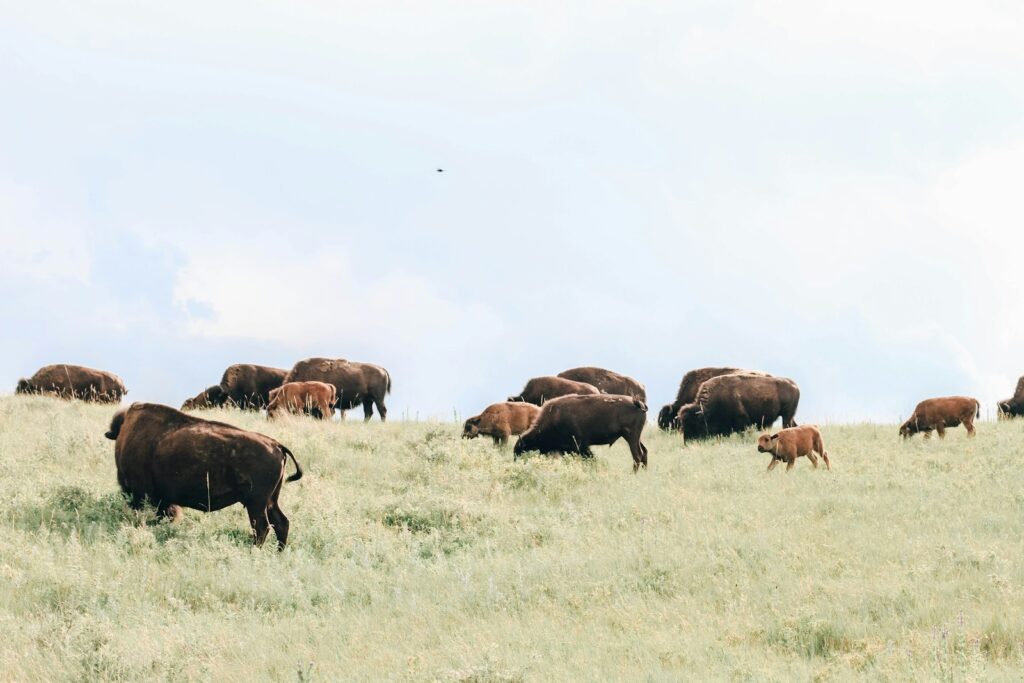
How your human group behaves significantly impacts bison comfort and safety during wildlife viewing experiences. Keep your group together in a compact formation rather than spreading out, which can make bison feel surrounded or trapped. Designate one person as a “safety monitor” who maintains awareness of animal movements while others are focused on photography or observation. Speak in hushed tones and minimize sudden movements that might startle the animals.
Children require special attention and clear instructions about staying close to adults and following directions immediately. Large groups should consider splitting into smaller units with adequate spacing between them to reduce their collective impact on wildlife behavior.
Understanding Seasonal Variations in Risk
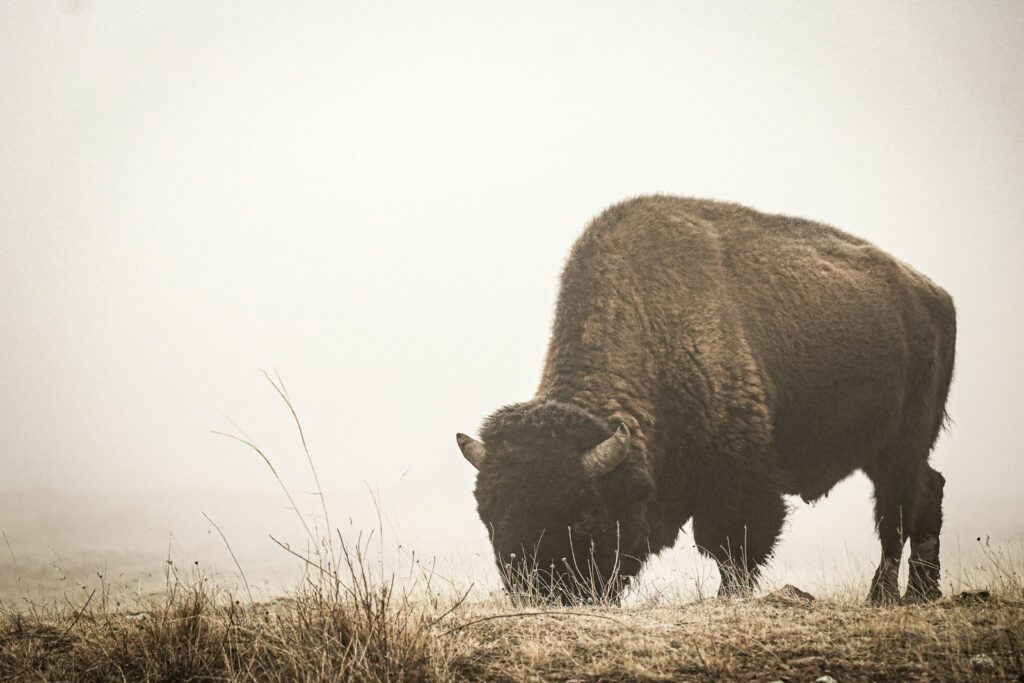
Bison behavior and associated viewing risks vary dramatically throughout the year, requiring adjustments to your observation strategy. Spring calving season (April-May) demands extra caution as protective mothers are particularly vigilant and aggressive toward perceived threats to their vulnerable young. Summer rutting season (July-August) brings different dangers as bulls engage in dominance displays, fights, and unpredictable behavior while competing for mating opportunities.
Winter viewing offers spectacular scenes of frost-covered bison but requires awareness that food-stressed animals conserving energy may have lower tolerance for disturbance. During migration periods when herds are moving between seasonal ranges, they may be more focused on travel and less attentive to human presence, creating false impressions of tolerance.
The Ethics of Wildlife Observation
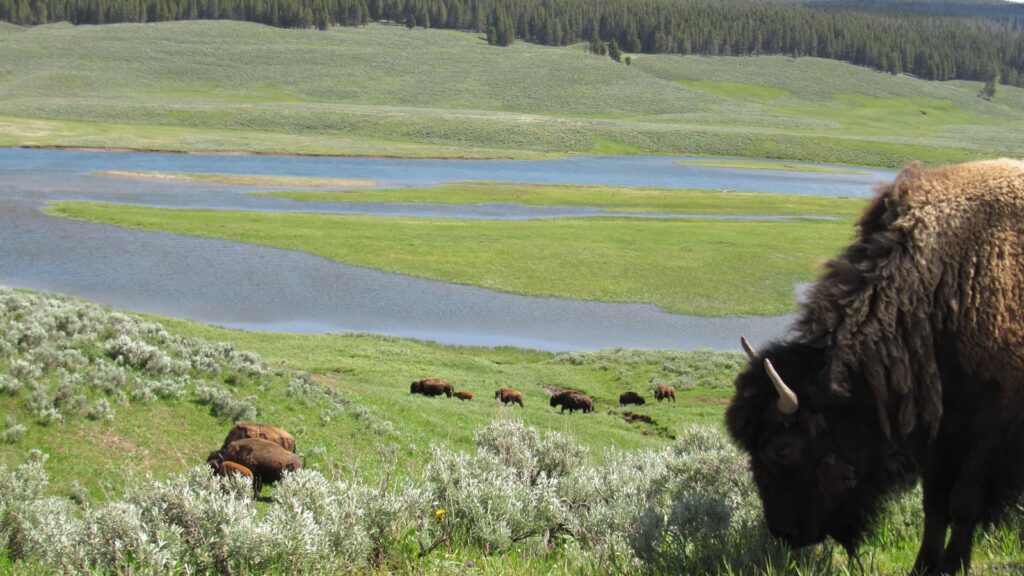
Ethical wildlife viewing extends beyond personal safety to encompass responsibility toward the animals and their ecosystem. The wildlife viewing principle of “take only photographs, leave only footprints” forms the foundation of responsible observation. Resist the temptation to call out, whistle, or otherwise attempt to gain animals’ attention for better photographs, as this creates unnecessary stress. Be mindful of your cumulative impact, understanding that while your brief observation might seem inconsequential, bison may encounter dozens of visitor groups daily.
Respect established closures and restricted areas, which often protect sensitive habitats or wildlife during vulnerable periods. Share your knowledge with others respectfully when you observe concerning behaviors from fellow wildlife watchers.
What To Do If Bison Approach
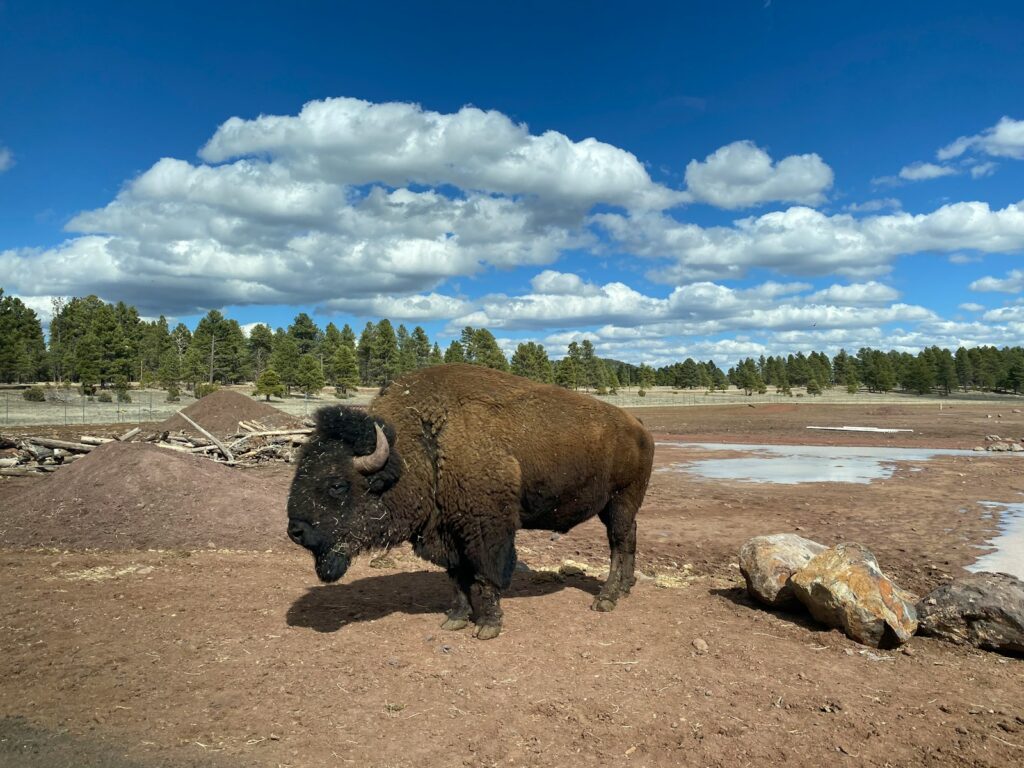
Despite your best precautions, situations may arise where bison begin moving toward you, requiring immediate appropriate response. If bison approach, remain calm and avoid running, which can trigger chase instincts—instead, back away slowly while facing the animal and seeking barriers like trees or vehicles. Groups should stay together rather than scattering, which can create confusion and multiple threats from the bison’s perspective.
If you’re in a vehicle when bison approach, remain inside with windows closed and allow the animals to pass without honking or making sudden movements. In the extremely rare event of an imminent charge where escape isn’t possible, lie flat on the ground and protect your head and neck, playing dead until the animal loses interest.
Photography Etiquette Around Bison
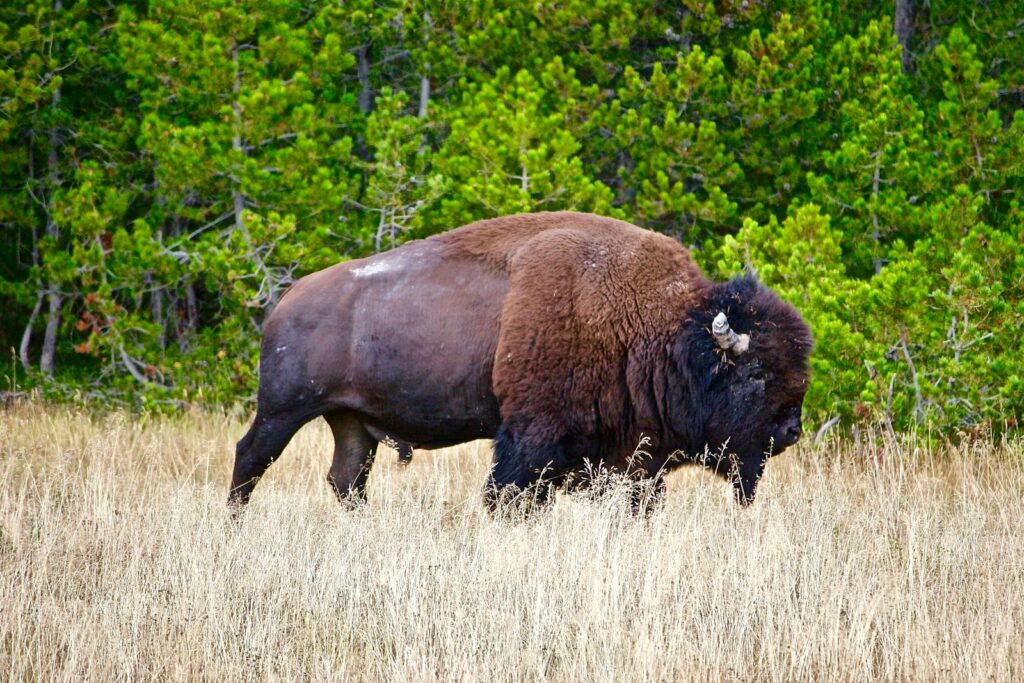
Capturing memorable images of bison requires balancing photographic ambitions with safety and respect for wildlife. The “telephoto lens rule” is essential—invest in sufficient zoom capabilities rather than physically moving closer for better shots. Turn off your flash when photographing bison, especially in low light, as the sudden brightness can startle animals and alter natural behaviors. Resist the temptation to position yourself for the “perfect angle” if doing so means compromising safe distances or cutting off animal escape routes.
Be particularly mindful of your situational awareness while looking through the viewfinder, as tunnel vision through camera equipment can prevent you from noticing approaching animals or changing herd dynamics.
Teaching Children About Safe Wildlife Viewing
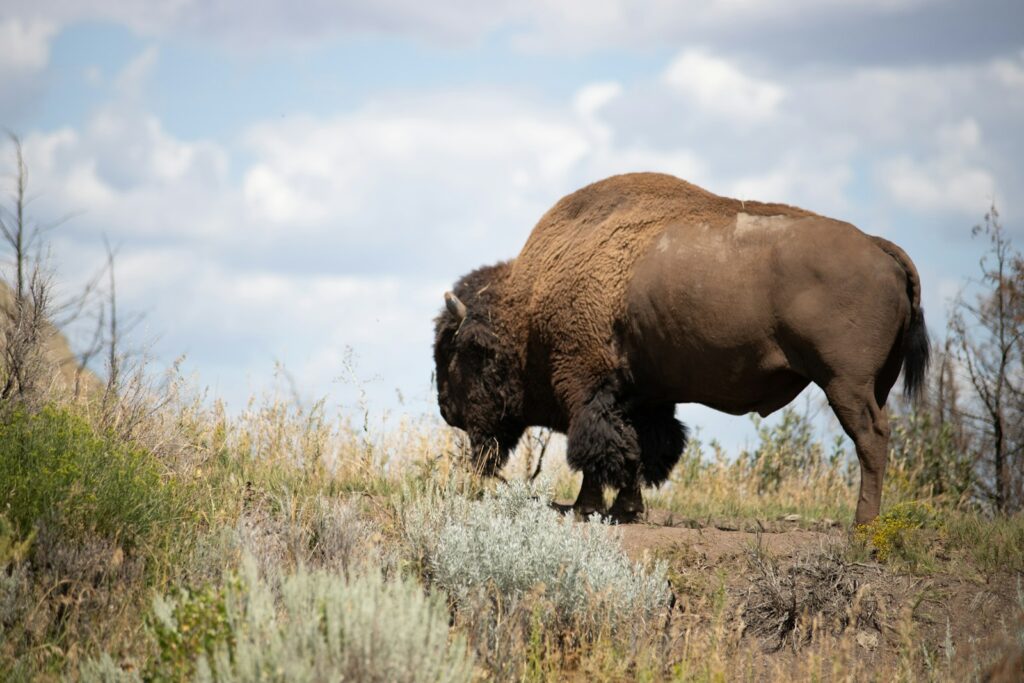
Introducing children to the wonder of bison requires additional preparation to ensure both their safety and positive wildlife experiences. Before arriving in bison country, discuss behavioral expectations clearly, establishing concrete rules like staying within arm’s reach of parents and using “inside voices” around wildlife. Create engaging educational opportunities by bringing wildlife identification guides and having children keep observation journals recording behaviors, group sizes, and physical characteristics they notice.
Establish a family “safety word” that signals immediate compliance without question should you need to retreat quickly from a wildlife viewing situation. Consider participating in junior ranger programs at national parks, which provide child-friendly education about wildlife safety and conservation.
Conclusion: The Beauty of Bison, Enjoying Wildlife from a Distance
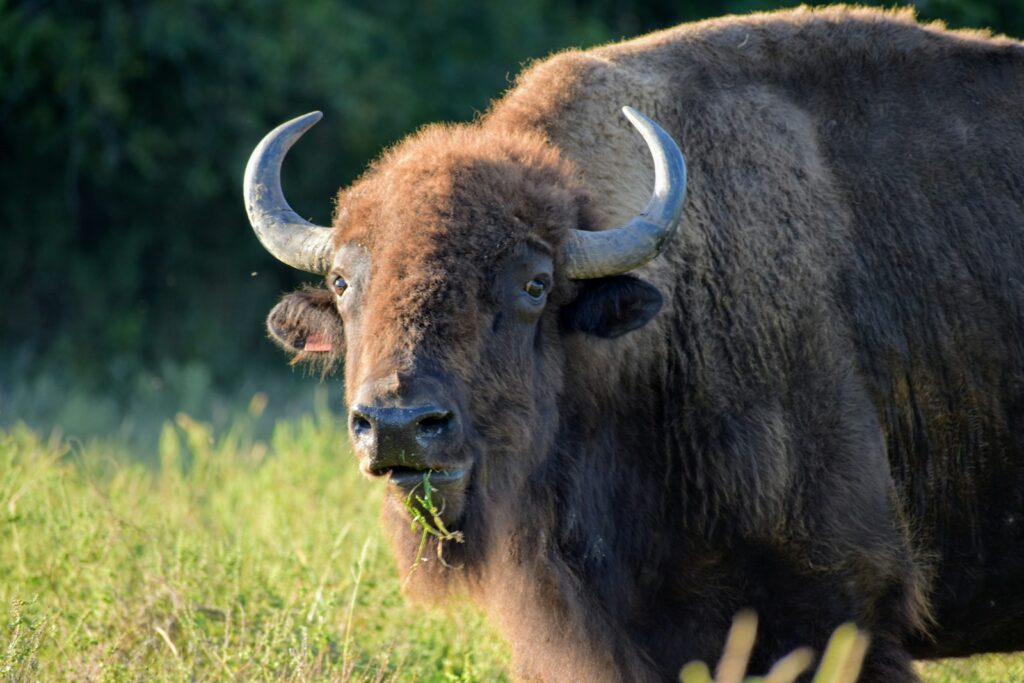
In our eagerness to connect with these iconic symbols of wild America, we must balance our desire for close encounters with respect for bison as powerful wild animals deserving of space and consideration. By following these guidelines, you’ll not only protect yourself but contribute to the conservation of bison by minimizing stress and disruption to their natural behaviors.
The most meaningful wildlife observations often come not from proximity but from patience—settling in at a respectful distance and becoming attuned to the subtle dynamics of herd life unfolding before you. There are few experiences more rewarding than witnessing these magnificent animals living freely as they have for thousands of years across the North American landscape.

